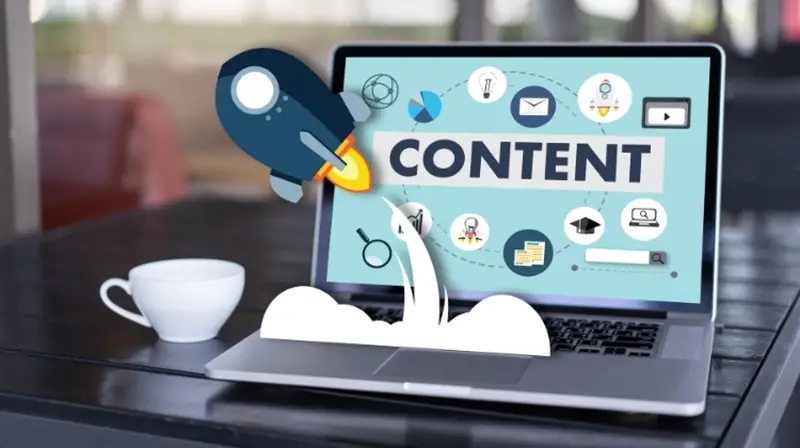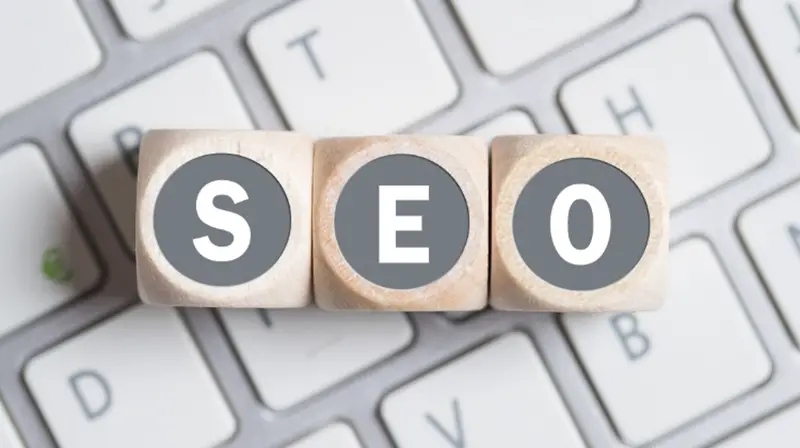Click here to get this post in PDF
The SEO of a website is the key to decide its future. You might have an excellent and engaging website that is properly structured, good inventory for the people, a free shipping facility for the customers, etc. But all these things will only matter when people will arrive at your store.
The majority of the traffic comes from the search engine result pages. Therefore, even if you are dealing in a niche where it is little to no competition, or in a highly competitive field, you’ll be needing to work on your SEO to secure a good rank in the search engine results pages.
SEO is equally important for all types of online businesses, irrespective of its size, nature, and scale of operation.
Another reason that increases the importance of SEO for a website is that it is something that you can control.
No business can run smoothly without facing any problems. There are a few factors that a business cannot control. For instance, a business cannot control bad weather, restore the law-and-order situation in the city, or prevent the new entrepreneurs from joining the market.
But when it comes to SEO, it is fully in the business’s control. You can control the prospective audience on your website. The audience that visits your website impacts the sales, generation of leads, and of course the revenue.
This means that investing your time, resources, and efforts in the Search Engine Optimization of your website will directly affect the visibility of your website on the search engine’s result pages. The higher your website will rank, the more traffic your website will get, and eventually, your sales and revenue will flourish.
Now, having understood the importance of SEO and how it can double your search traffic, let us move to the preparation of the eCommerce SEO checklist.
We have curated a list of 8 advanced SEO techniques that will double your search traffic. Keep scrolling to step up the SEO of your website!
8 Advanced SEO Techniques That Can Double Your Search Traffic
1. Re-optimize Old Content
Content marketing is raging in the world of digital marketing. It allows the integration of the keywords that prospective audiences can use in their search query.
Effective content answers the audience’s questions, solves their problems, and makes them aware of the information. Good content that is free from plagiarism, helps in building trust with the customers. This in turn improves the conversions and customers return to the website for seeking the answers to their queries.
Creating content is not an easy task. It takes time to research for relevant information and stats, create engaging infographics, videos, or graphical content to go with the content. Instead of creating new content, you can pick up your old content and optimize it.
To re-optimize your old content, you first have to check which content needs to be worked on. For this purpose, use the following approaches to check the pages that have received fewer views, clicks, or interactions.
– Google Analytics
Use Google Analytics to view the organic traffic or conversions for pages.
– Google Search Console
It will help you to check the clicks a web page has received.
– Keyword Tool
Use a good keyword tool to assess the keyword ranking and traffic generated by them on a webpage.
Once you have checked the web pages and content and that needs to be reworked, you can start working on them.
Optimize the titles, update the internal linking, and use the keywords at appropriate places without overstuffing them.
If your content is quite old and the information that you added is no longer valid, or if the figures and stats mentioned therein have changed, then correct the facts. Add extra information if you wish to make it more informative and engaging.

Updating the old content will fuel up your SEO and will improve the rank of your website.
2. Build Smart Internal Linking Process
When a search query is entered by a user, search engines send their robots to crawl and index the website.
If the robots don’t crawl your pages, then your website won’t appear in the result pages, and as a result, no traffic would be generated. By having internal links, you open the gates for the robots to visit as many pages as they can and display them to the users on the search engine result pages.
If you do not have a proper linking structure, you prevent the search engine bots from crawling maximum pages on your website.
Building internal links is not difficult. All you have to do is link low-authority pages with high-authority pages, such as the homepage of a website to the other less important pages.
Another effective way to build a smart internal linking structure is to mention the links of related articles on your new articles.
Review the old articles and blogs. Read its content and insert the links of related articles at appropriate places.
By mentioning links on every page, search engine bots will get more access to crawl the website.
3. Mobile-Friendly Websites
A website that is not mobile-friendly can wave goodbye to a large audience. Mobile phones have become an integral part of our lives. Its use is no longer limited to communication.
People use mobile phones for almost everything be it communication, entertainment, connecting, or shopping.
An average mobile user spends 5 hours a day on his cell phone. This means that the user is most likely to visit your website by a cell phone than any other digital device.
Make a mobile-friendly page an important part of your eCommerce SEO checklist. If you are using WordPress or Shopify for your eCommerce store, then make sure to select the theme that is mobile responsive and won’t frustrate the mobile user while exploring your website.
If your website is not built on any CMS, then you may need to hire a developer to optimize your site for mobile users.
4. Accelerate the Website’s Speed
Why do people love to shop online?
Because it is quick and easy. If your website is not quick to respond to the needs of the customer, then be prepared to bid farewells to him.
Did you know that more than 50% of visitors will exit the website if it doesn’t load in 3 seconds?
Pretty soon, right?
Do not expect your customer to be kind or patient enough for your website to load. With numerous options available on the internet, there is no way your customer is going to wait exclusively for your website.
Instead of expecting your customers to wait, you have to make your website faster. If not, then users will exit your website soon and it will increase your bounce rate. Google, doesn’t like to send its users to websites whose bounce rate is high.
Therefore, accelerate the speed of your pages. Optimize your code and images. Clean the extra load on your website to make it work faster.
5. Delete Thin Content
Thin content refers to content that offers little to zero value to the users. A few examples of thin content are listed below:
a) Content that lacks usefulness
b) Duplicate content issues
c) Pages stuffed with ads and CTAs
d) Pages with less than 250 words
Google is the pioneer of search engines. It frequently updates its algorithms to display the best website for its users. If your website has thin content, then Google will not consider displaying your website to the user because the web pages have less information or content to satisfy the needs of the user.
If you don’t want Google to think of your content as useless or less valuable, then delete the content that will harm your SEO.
Audit your website’s content check for duplicate pages or content, pages that have sparse content, affiliate pages, etc. to improve your SEO.
6. Fix Broken Links
Broken links refer to the pages that display the message: ‘webpage no longer exists. This can cause your user to leave the page immediately. If the broken links are not fixed, the users will continue to exit your site and as a result, your SEO ranking will fall.
To improve the SEO and to allow more gateways to the search engine bots, a website uses internal and external linking strategies on its web pages.
Make it a routine to check all your internal links if they are working perfectly or not. If there are any links to the pages or blogs that you have removed, then make sure to remove the link or replace it with some other relevant link.
As for external links, check those too. If they are working fine then great, if not then you can replace those links…and you can also help the authority websites to fix their links.
7. Claim Dead Links to Competitors’ Sites
When a user clicks on the link and lands on the page stating ‘Error 404’, what do you expect him to do? Leave the page, right?
Broken links can increase the bounce rate of a website. How about once you are done fixing your broken links, you help other websites?
Helping the other websites to build their broken links isn’t an act of kindness or charity, no. It will help you to secure off-page SEO i.e.: building backlinks that will generate more traffic.
Use the backlinks analytics tool and run the domain of your competitor’s website and examine the list of links that are broken.
Next, search for the content on your website that can be linked to the broken page of the competitor’s site. If you have the content then congratulations, head straight to the prospect, and offer them the URL of your website to replace their broken link.
Now, the next time, whenever the user clicks on the link (that was previously broken) he will be landed on your website’s page, isn’t it great?
8. Analyze Your Log Files
Another advanced technique to improve your SEO is to analyze the log files of the website.
Analyzing the log files gives an insight into how and where your website’s crawl budget is being used, which pages are not crawled enough, and factors that cause crawling errors, etc.
By keeping yourself updated with the information of the log files, you’ll know exactly what the crawling issues are and how you can fix them.
Rectifying the crawling errors will help the search engines to rank your pages higher, hence improving the SEO and directing more organic traffic to your website.
The Importance Of SEO To Drive Traffic To Your Business
Conclusion
To improve the SEO of your website and rank higher, you have to take your SEO tactics to an advanced level.
Sticking to the basic tactics will not make your website stand out amongst the millions of others. However, by applying strong strategies you will take your website’s SEO to a whole new level that will bring maximum traffic, leads, and ultimately the sales.
Use the above-stated advanced SEO techniques to double your search traffic and stay ahead of your competitors.
About the Author
Ricky Hayes is the Co-Founder and Head of Marketing at Debutify – free Shopify theme, helping dropshippers build high-converting stores in minutes. He is a passionate entrepreneur running multiple businesses, marketing agencies, and mentoring programs.


